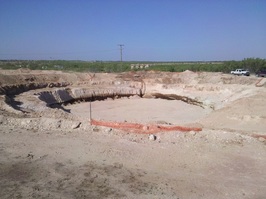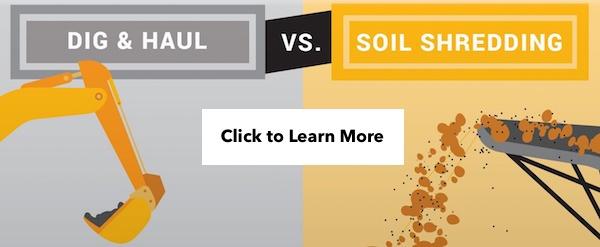Selecting the best drilling technique for your next environmental drilling project in Texas can help you achieve your project goals. One important factor to consider when you select a drilling technique is the type of soil or geologic formation you are likely to encounter. There are a variety of soil types and geologic formations in the vast Lone Star State, from clay and caliche, to hard rock and shale, to sandstone to sand.
What Soil formations are in Texas?
Soil forms through weathering of existing rock formations and by deposition of weathered rock particles by moving water like streams or the ocean. Composition of soil formed by weathering is directly related to the underlying geology, topography and rainfall. Sandstone, shale, limestone and marl were deposited across Texas onto an older igneous and metamorphic bedrock during geologic periods when the central US and Texas were covered by shallow seas. Layers of sandstone, shale, limestone and marl dip southward toward the Gulf resulting in bands of these rocks exposed at the surface.
Soil that develops at the surface may be sandy where the bedrock is sandstone layers or clayey where the bedrock is fine-grained formations like limestone and marl. Sandy and clayey soil may also occur along rivers channels and floodplains and in coastal zones. Caliche is a unique soil type that forms in drier areas of Texas as carbonate cemented soil above bedrock, cemented soil fragments in the soil column, or may be rock-like formation several feet thick.
What Environmental drilling techniques can be used for Texas soil types?
Push probe and hollow stem auger drilling techniques are suitable for most environmental drilling in Texas for shallow borings (less than 20 or 30 feet), and where soils are sandy or clayey and bedrock is not present at ground surface. Soil in east Texas is sandy and clayey with deep bedrock. Clayey soil has formed on the Eagle Ford shale in south Texas and the Cline shale in southwest Texas. Sandy and clayey soil is present in most of the Gulf coastal area.
Push probes are less effective in rocky soil that you might find in West Texas where mixed rock types are present. Caliche soil present in the panhandle, west Texas, and central and some parts of south Texas, may also prove difficult for push probe drilling.
Air and mud rotary are good drilling techniques to use for deeper borings into hard rock. Some difficult subsurface conditions may make mud rotary the best choice. For example, in areas of unstable ground such as Childress where flowing sands cause borehole stability problems. Use of multiple drilling techniques and other approaches may be necessary for extreme subsurface conditions such as alternating hard and soft layers or to case a borehole to prevent the loss of drilling fluids. Subsurface Karst voids are common along the I-35 corridor between Dallas and San Antonio where the Edwards Aquifer is present.
When planning your next environmental drilling project in Texas, contact the experts at Talon/LPE Drilling Services. We have worked all over the state of Texas, from Dallas and Houston to West Texas and the Texas Panhandle. We can determine the best drilling equipment and protocol to use for your site, whether the soil is made of clay, caliche, rock, shale or sand. Contact us today for more information.


